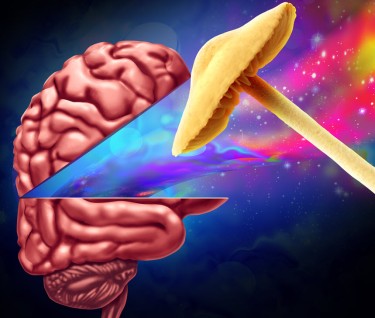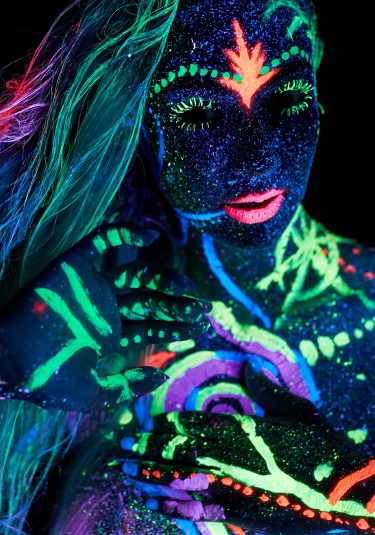
What are Entheogens and why are they a human right?
Human rights are the basic rights and freedoms that belong to every person, regardless of race, sex, nationality, ethnicity, language, religion, or any other status.
The concept of human rights was formally enshrined into the global system with the adoption of the Universal Declaration of Human Rights (UDHR) by the United Nations General Assembly on December 10, 1948. This historic document outlined 30 articles that represent the foundational rights all human beings are inherently entitled to.
However, despite the UDHR’s recognition of the right to freedom of thought, conscience and religion, current international drug laws appear to violate these fundamental human rights. The criminalization and prohibition of certain substances, including those used in entheogenic practices, overrides an individual’s bodily autonomy and sovereignty over their own consciousness.
These subjective laws are often not based on scientific evidence of harm, but rather on political, social and cultural factors.
Entheogens are psychoactive substances, typically derived from plants or fungi, that are used in spiritual, religious or shamanic contexts to induce altered states of consciousness.
Examples include psilocybin mushrooms, ayahuasca, peyote, and iboga. Many indigenous cultures have used these substances in sacred medicinal and spiritual rituals for thousands of years. The word “entheogen” itself means “generating the divine within.”
The criminalization of entheogens and the plants/fungi they are derived from has not only violated the right to freedom of thought and religion, but has also led to the erosion of many indigenous cultural practices. Furthermore, the so-called “War on Drugs” has had devastating consequences, including mass incarceration, racial disparities in enforcement, and a failure to address addiction as a public health issue.
In this article, we will explore the history and cultural significance of entheogenic practices, the current state of drug laws, and how these laws conflict with the fundamental human rights outlined in the UDHR.
We will argue that cognitive liberty – the right to sovereignty over one’s own consciousness – is a basic human right, and that drug laws must be reformed to respect this. It is time to shift away from the criminalization paradigm and towards a rational, science-based, and compassionate approach to drug use and addiction that respects human rights.
The term “entheogen” is derived from two ancient Greek words: “entheos,” which means “full of the god, inspired, possessed,” and “genesthai,” which means “to come into being.” Put together, an entheogen is a substance that causes one to become inspired or to experience feelings of inspiration, often in a religious or “spiritual” context.
Entheogens have been used in virtually every culture and religion known to humankind. From the ancient Hindu Vedic texts describing the use of soma, to the Eleusinian Mysteries of ancient Greece, to the shamanic practices of indigenous peoples across the globe, these substances have played a profound role in human spirituality and culture.
In the modern Western context, entheogens are often associated with psychedelic substances like LSD, psilocybin mushrooms, and DMT.
However, the term entheogen is preferred by many who use these substances in a spiritual or religious context, as it emphasizes their potential for inducing mystical or transcendent experiences, rather than simply being used recreationally.
Despite their long history of cultural and religious use, many entheogens are currently illegal under international drug laws. This is a relatively recent phenomenon, with many of these substances only becoming illegal in the mid-20th century.
The reasons for their prohibition are complex and often political, rather than being based on any scientific assessment of their potential harms.
The idea that certain plants or fungi can be made illegal is, when you think about it, quite bizarre. If we accept the mainstream scientific view that humans evolved on this planet alongside these species, then we have coexisted with them for millennia. Many of the plants and fungi containing entheogenic compounds have been consumed by humans for thousands of years with no major detriment to society.
Furthermore, it’s important to note that it is not the plants or fungi themselves that are illegal, but rather the human act of possessing, cultivating, or consuming them.
The notion that a government can prohibit an individual from altering their own consciousness, especially in a spiritual or religious context, seems to fly in the face of basic human rights and cognitive liberty.
This is why the term “entheogen” is so important. By using this word, we acknowledge that these substances are not merely “drugs” used for recreation, but rather tools that have been used for millennia for spiritual and religious purposes. When we frame them in this context, it becomes clear that their prohibition is not only illogical but also an infringement on religious freedom and personal autonomy.
One of the key arguments put forth by those in favor of drug prohibition is that if we were to legalize cannabis and other entheogens, society would collapse. They paint a picture of widespread addiction, decreased productivity, and moral decay.
However, the recent legalization of cannabis in many jurisdictions has proven this narrative to be false. Society continues to function normally in these areas. In fact, some evidence suggests that there are positive outcomes associated with legalization, such as people reducing their use of pharmaceuticals and becoming more active and healthier.
It’s important to note that not all entheogens are the same. For example, the experience of consuming psilocybin mushrooms is vastly different from that of cannabis. However, this distinction is largely irrelevant when it comes to the question of legalization.
This is because the use of entheogens, regardless of their specific effects, is typically guided by the principle of “Set and Setting.”
“Set and Setting” is a term coined by psychedelic researcher Timothy Leary in the 1960s. It refers to the psychological, social, and cultural parameters that shape the response to psychedelic drugs. “Set” is the mental state a person brings to the experience, including their thoughts, mood and expectations.
“Setting” is the physical and social environment in which the drug is consumed. The idea is that the effects of a psychedelic drug are largely determined by these factors, rather than by the drug itself.
Those who choose to consume entheogens, whether in a spiritual, therapeutic, or recreational context, generally understand the importance of Set and Setting.
They recognize that these are powerful substances that should be used with intention, preparation, and care. This understanding mitigates many of the potential risks associated with entheogen use.
Moreover, even if entheogens were legal, it’s likely that many, if not most, people would still choose not to consume them. Personal beliefs, cultural norms, and individual preferences all play a role in shaping behavior.
We can see this with the legalization of cannabis – while some people felt more free to experiment, the majority of the population did not suddenly become regular cannabis users.
Historical and contemporary evidence suggests that those who wish to consume entheogens will find ways to do so regardless of their legal status. Conversely, those who have no interest in consuming these substances are unlikely to start simply because they are legal.
Therefore it’s safe to assume that even though legalization of entheogens might be “scary” for some, the truth is that the world won’t end and in fact, it might revolutionize society to become something better.
Those who engage in entheogenic practices often describe their experiences as “holistic,” reporting a profound sense of connection to all things on the planet. They speak of experiencing “universal love” and a deep sense of unity with all of existence.
This perspective shift, often referred to as the “entheogenic experience,” has the potential to dramatically alter the way individuals relate to themselves, others, and the world around them.
Imagine if just 10% of the global population adopted this concept of universal connectedness. It could lead to a significant reduction in violence, exploitation, and divisiveness.
After all, how can you harm or cheat that which you feel a deep, intrinsic connection to? Empathy, it seems, is a natural byproduct of entheogenic practices.
While highly subjective, many individuals who regularly engage in entheogenic practices report becoming less attached to political ideologies. They find themselves challenging their own prejudices and thinking outside of the rigid mental structures that often define our worldviews.
In neurological terms, these structures are literally hardwired into our brains as we strengthen certain neural networks through repetition and reinforcement.
Entheogens, on the other hand, seem to induce a state of heightened neuroplasticity, allowing individuals to break free from these “neural boxes” constructed by culture, habit, and conditioning. This flexibility of thought could be key in addressing many of the complex, systemic issues we face as a species.
Imagine a world where empathy, adaptability, and nuanced thinking are the norm. A world where political tribalism takes a backseat to universal human welfare. Where the needs and perspectives of all individuals, regardless of their background, are considered and incorporated into the fabric of society.
This is the kind of paradigm shift that widespread entheogenic practices could potentially catalyze.
A society built on these principles would be primed for unprecedented growth and evolution. It would be a society rooted in love, freedom, and the understanding that we are all interconnected.
While the widespread adoption of entheogenic practices is not a panacea, it could be a powerful tool in facilitating the kind of global consciousness shift that our species so desperately needs.
Of course, this vision is speculative and optimistic. Realizing it would require significant changes in our current legal, social, and cultural frameworks. But in a world increasingly fractured by division, inequality, and environmental destruction, it’s a vision worth considering.
Perhaps, by embracing the wisdom and potential of entheogenic practices, we can take a collective step towards a more empathetic, connected, and enlightened human future.
My goal with this article is to show you the insanity of drug laws. To show you that your use of LSD, Psilocybin and yes…cannabis…is a protected human right. I want to show you that despite legalization, most people will still not use it and finally, that perhaps, this path of entheogens could be the first domino to save humanity from greed, corruption, and hate.
You’re not a drug users – you’re a psychospiritual practitioner. Remember that always.
BIG PHARMA GETS ENTHEOGENS, READ ON…
THE BIG PHARMA ENTHOEGENS REVOLUTION IS NOW HERE!
- SEO Powered Content & PR Distribution. Get Amplified Today.
- PlatoData.Network Vertical Generative Ai. Empower Yourself. Access Here.
- PlatoAiStream. Web3 Intelligence. Knowledge Amplified. Access Here.
- PlatoESG. Carbon, CleanTech, Energy, Environment, Solar, Waste Management. Access Here.
- PlatoHealth. Biotech and Clinical Trials Intelligence. Access Here.
- Source: http://cannabis.net/blog/opinion/what-are-entheogens-the-billion-dollar-bet-on-the-psychedelics-market




